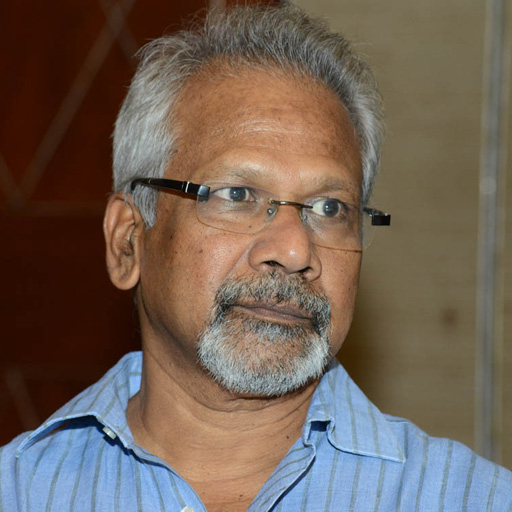A historical sketch of human settlements would reveal one stark truth: human beings are dependent on and settle around water features, be it rivers, lakes, seas or the ocean.
If you look at Chennai’s relationship with water, you can’t deny the uncanny resemblance of its relationship to a Human life. It got its great Up’s and Downs followed by negligence and then affairs with private water sources almost forsaking the basic source and ultimately the breakup which has led to the current water crisis that Chennai is undergoing.
It’s that time of the year again when “Water water everywhere but not a drop to drink” becomes a common headline in Chennai newspapers. But this Robert Browning quote from ‘The Rime of the Ancient Mariner’ highlights a fatal truth: there is very little of the most important source of life on earth – potable water – and Chennai, despite its pioneering water policy, has been struggling with supplying its most basic needs.
In our modern society today where urbanization is growing at a fast pace, more than half of world’s population lives in metropolitan cities. One of the main features distinguishing a metro city from a town or a village is its stark lack of greenery and abundance of concrete structures. They are correctly called as concrete jungles. Because of this feature, cities have a huge problem with managing rainwater or storm water.
In a village or small town, 50% of the rainwater is absorbed into the ground, 40% evaporates or transpires through the trees and rest 10% is runoff on the surface. Where in a big city where greenery is almost gone and trees are being cut down to make way for widening of roads, the rain water has nowhere to go. Due to 80% of a city’s surface being paved roads or sidewalks, the rainwater can only be drained through gutters and drainage systems. There is only 15% absorption into the ground and rest 55% is runoff water. This makes the storm water drainage and sewerage as part of the essential infrastructure of a modern city.

Source of Water Supply for Chennai
But where does Chennai get its water from? Chennai probably has the most varied sources of water supply for an Indian city, receiving water from at least four large reservoirs (Poondi – 3230 million cubic feet (Mcft), Puzhal – Red Hills – 3300 Mcft, Chembarambakkam – 3645 Mcft and Sholavaram – 881 Mcft), at least three river systems (Kaveri, Krishna and Palar), two desalination plants at Minjur (100 MLD) and Nemelli (100 MLD) (with two more being at various stages of planning and execution) and several hundreds of groundwater aquifers across the city and its hinterlands. Each of these solutions taken together form a barely sufficient system during average monsoons let alone after the failure of the northeast monsoon upon which the city is almost exclusively dependent.
Water Crisis in Numbers
Chennai’s Urban Growth
With a rapidly growing population in an area bounded by natural and ecological impediments on all sides, matters can only get worse. The demand for affordable housing has led to the city sprawling over a relatively larger area. Chennai has also had a large stock of unsold and unoccupied flats especially in expanded areas in the IT Corridor in the south and in the old industrial suburbs of Ennore, Manali, Madhavaram and Ambattur. Expanded further, suburbs like Pallavaram and Tambaram are also growing independently oftentimes at the cost of the region’s green and blue cover.
But it is not enough to look simply at the amount of water available for supply. It is equally if not more important to see what we are doing with the water that is being supplied?
While technology may have created solutions for creating oasis within the desert, when used without thought, this can result in serious consequences for the long-term sustainability of .
Politicians believe that the only solution is increased desalination but this comes with a variety of major environmental issues not least of which includes the erosion of the city’s long coastline which will only accentuate Chennai’s water problems further.
The relatively middle-class neighbourhood of Valmiki Nagar in Chennai was once the main source of potable water serving much of South Chennai’s needs. This aquifer fed the temple tank of the famous Marundeeshwarar Temple whose waters were said to have healing properties. Tapped along with the city’s three grand reservoirs, the water supply from this aquifer was seen as excessively abundant. Water was so abundantly available in the neighbourhood that there were instances when water had to be pumped out to enable the setting of foundations for the growing number of buildings in the region.
However, poor management/recharge and over-extraction has resulted in the abandoning of the aquifer for primary use. Admittedly, Chennai was a much smaller city with a smaller population then, and South Chennai was much less dense. But, with the growth of the city and the unsustainable expansion of its limits, these erstwhile aquifers were rendered overdrawn and inadequate. Of late, the aquifer has been plagued with saline intrusion from the sea nearby which has led to the twin challenges of eroding its pristine shoreline and the contamination of one of the city’s lifelines.
Indications of such trends repeating themselves are also evident along the three arterial thoroughfares in the south: Grand Southern Trunk (GST) Road, East Coast Road (ECR) and Old Mahabalipuram Roads (OMR) where the complex systems of undisturbed coastline, brackish marshes and forested watersheds have started giving way to modern forms of concrete developments. While arguments given both ways indicate that this is the sole way to spur growth within the city, the succeeding investment in jobs, housing and infrastructure is being done on shaky foundations.
Thus far, the picture of Chennai’s future seems very gloomy but in the aftermath of a trifecta of natural disasters in the short space of 5 year, there is a belief that systems of resilience need to be built into the city, its people and its infrastructure. Chennai’s municipal authorities along with partners in the corporate and social space have taken small steps towards preserving the city’s vanishing water bodies which are believed to have once numbered in the tens of thousands.
While some may argue that the damage, in this regard, is already done, a lot can (and is) being done to reclaim these lifelines of the city’s most fundamental need. In addition to restoring the water bodies, several major lakes and tanks in different regions are being .
What is Storm Water Drain
This is the drainage system built by the civic authorities to collect and channelize the storm water or surface water accumulated on streets and paved areas due to the rains. It is different from the sewer drainage system in that the wastewater from houses and industries is not allowed to be channeled into the storm water drainage system. This system is built to collect flood waters and rain water that accumulates on the rooftops, paved streets, courtyards, parking lots, sidewalks etc and causes it to flow down through the drainage system into the nearest water body eg a lake, canal, pond etc and then eventually through the rivers into the ocean.
Storm Water Drains Across the Globe
In most developed countries like the US, UK, Canada and big cities like Hong Kong and Tokyo storm water is very well managed and streets do not flood with rain water but in developing countries such as most of the African subcontinent, North America, Bangladesh, and India the drainage infrastructure and its maintenance is far from what it should be.
There are many ways a metro city manages its storm water. One of them is permeable pavements. This allows rain water to slowly infiltrate into the ground below. These pavements can be used only for low and light traffic. Toronto, Canada is one such city which has implemented green infrastructure by implementing green roofs construction. This is also called green or living roof where the roof is completely or partially covered with vegetation growing over a waterproof, root-barrier membrane. This also helps combat urban heat-island effect mainly caused by global warming. More and more cities are adopting this, eg Chicago, Atlanta and Portland.
The NYC green infrastructure of New York City helps collect rain water and does not allow it to enter the drainage system. They are called Rain Gardens. These are small patches of garden all along the sides of the roads which collect rain water but keep it in and prevent runoffs. Rain gardens add to the greenery of a city while allowing rain water to be naturally absorbed into the soil. These are in addition to the otherwise robust storm water drainage built in the city to take care of floods and such situations.
In Singapore, two thirds of its area is designed to be used as water catchment. The water is collected through an extensive network of drains, canals, reservoirs etc and then treated and supplied as drinking water. This makes Singapore one of the few countries in the world to harvest urban storm water in a large scale for its water supply needs.
In developing countries such as India, storm water drainage is not fully developed and installed. Less than half of our cities have the drainage system in place and those too are not functioning well due to clogging by garbage and sewage problems. In the cities of South Africa, according to a survey done in 2009 about 15% of their population lives in informal dwellings or shacks. Similarly other countries have large populations living in slums. These settlements have no proper drainage system and produce a large amount of garbage which is not able to be managed by the local civic authorities. This results in clogging of the existing drainage system and hence flooding at the time of
Better Storm Water Drains
Some steps to protect these efforts further along this line include designing/redesigning our systems of drainage to incorporate greater elements of natural drainage rather than enforcing strict impermeable boundaries.
The purpose of stormwater drains in a flat coastal city seems a little excessive in itself. But many legacy systems such as this have been built into Chennai’s infrastructure planning. The retrofit of existing stormwater drains to incorporate scientifically-built recharge wells in areas of the city badly affected by the diametrically-opposite effects of groundwater depletion and inundation will simultaneously help in the preservation and restoration of our groundwater aquifers while also strengthening existing flood resilience.
Areas like T Nagar, Thiruvanmiyur, Nungambakkam and Mylapore that were badly affected during the 2015 Floods have favourable soil conditions for this recharge to be taken up. However, in coastal regions like Ennore, Besant Nagar, Neelankarai and Akkarai with highly permeable sandy soil types which are conducive to groundwater recharge, steps need to be taken to prevent , where this infrastructure is planned but limited execution has taken place, steps should be taken to make it mandatory.
On this front to Chennai seems to have a learn a lesson after the 2015 floods. “Storm water drains are designed for 55mm rainfall and can handle extreme water stress events” explained Mr L Nandakumar, Chief Engineer, Greater Chennai Corporation during a talk at MCCI.
Role of Storm Water Drains in Flood Management
Floods are managed in various ways by a city. The primary ones are catchment based where rain water is collected through drains and pipes and directed to the nearest water body or storm water collection ponds.
As seen earlier, in developed countries all their storm water is collected and channeled by this method. Since 80% or more of city ground surface is paved, they heavily depend on their drainage system to channelize the rain water through drains and collection pits.
There are two types of storm water drain inlets, one which are at the side of a curb which are slightly lower in level than the road and the other is grated inlets. These have a heavy iron cover over the inlet preventing debris and garbage from entering the drain. The water from these drains and pipes are carried through culverts which are big tunnels constructed under the roads to carry water to a bigger open channel and then finally to a river.
The drainage system is mostly open drains and gutters which are prone to clogging with natural debris and garbage from households. This results in ineffective drainage system and we have water logging that takes days to dry up and clear.
The Civil Engineering aspect of Storm Water Drains:
The Drains and Canals are provided for all Chennai roads which are over and above 7 meters of width. The size of the drain depends primarily on the micro-regional land characteristics, soil type and proximity to the neighbouring water catchment. The architecture of these drains are such that, a Fibre reinforcement polymer man holes are provided at every 5 meter intervals. This unique feature of drain helps in manual desilting in event of any solid waste clogging or congestion.
It is also notable that Corporation of Chennai has initiated automation of Desilting process by the use of Robotic Excavator and Amphibian Vehicle. The Multi-purpose Robotic Multi-purpose excavator and Amphibian Vehicles are deployed to clean Chennai waterways, desilting, remove water hycanith, and removing anthropogenic garbage litters. At the moment, waterbodies and open canals employ 60% Amphibian Vehicles, 30% Robotic Excavators and 10% Human Labor to achieve its civic objectives. This effort of Chennai Corporation will greatly reduce human intervention of (SWD) drain distilment in the future.
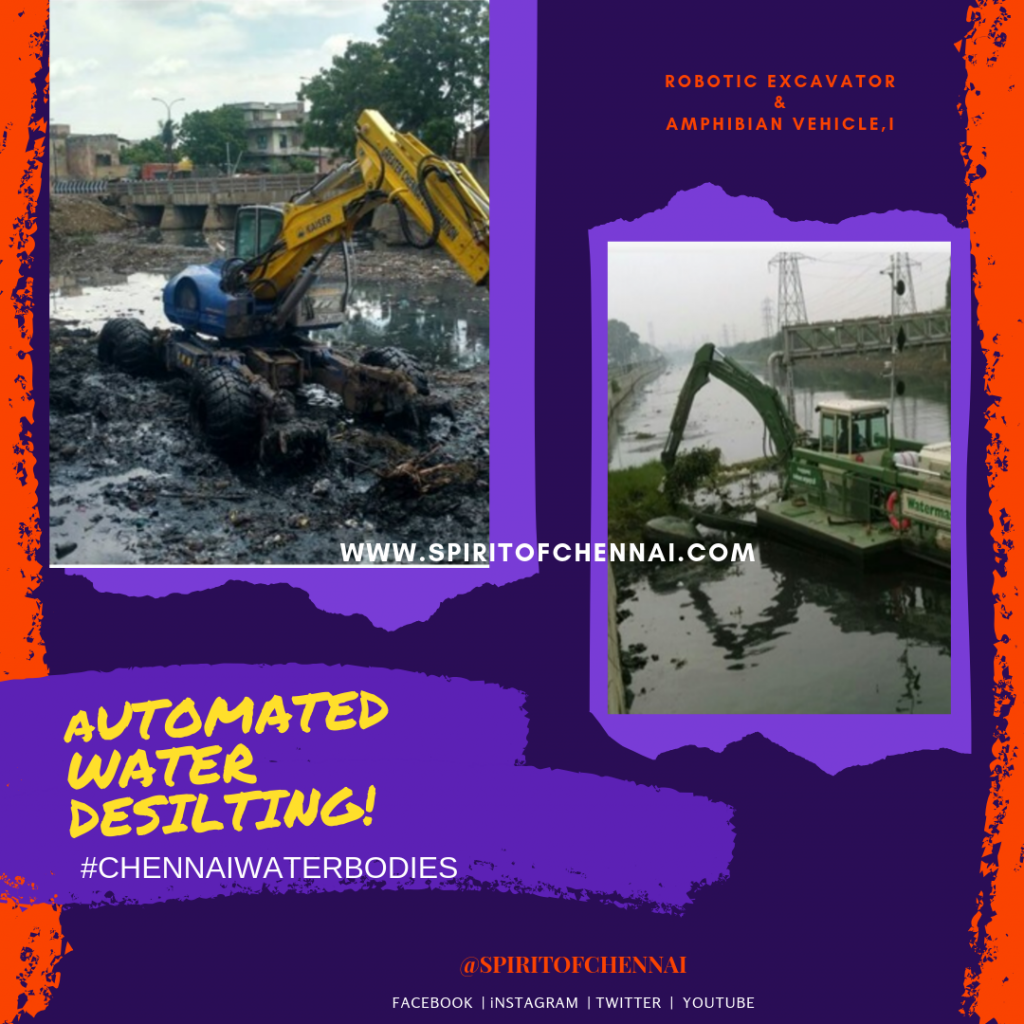
How Storm water drains works in preventing Chennai Floods?
The Strom water drain (SWD) infrastructure has the capacity to prevent Chennai Floods and Localized flood damage. The Stormwater run-off into the natural watersheds, catchments and eventually the sea can totally prevent even large scale flood inundations. The Size and Capacity of the storm water canals are built to hold 68mm rainfall intensity per hour. This accounts for the intensity of climate change, in event of floods disasters too.
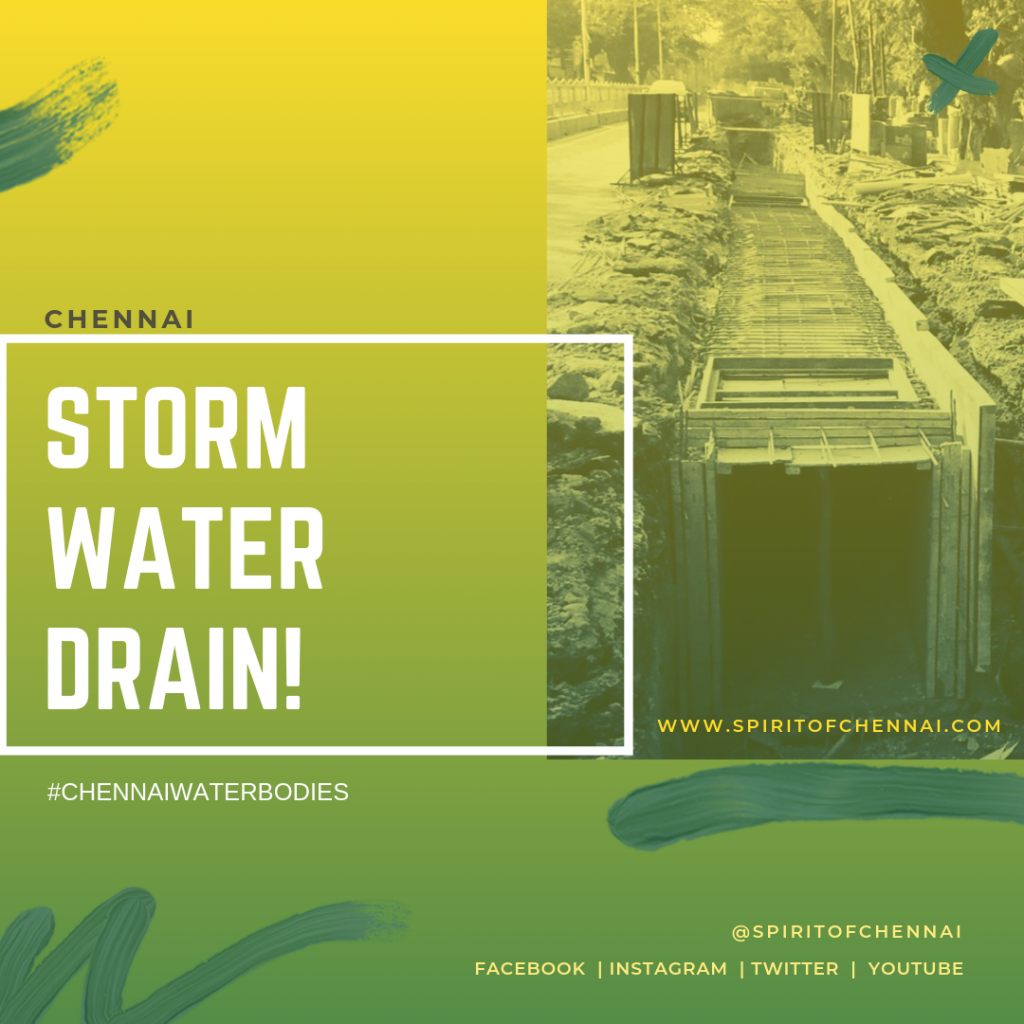
How Garbage collection within the drains are creating city flood events
Most storm water drains are seen as garbage dumping place by the local residents leading to clogged drains. This is especially because garbage collection and management systems are severely impaired in most cities in India. Adding to that is the problem of littering and people throwing plastic bags and wrappers on the road and not into dust bins. These all gets swept into these drains during rains and heavily clogs the system. The citizens are equally responsible, if not more, for the present situation.
The other contributing factors are poor urban planning, absence of rainwater harvesting and to add to that is the fast paced city development which mostly neglects proper drainage. One will find roads being made in a residential area and then again and again dug up to lay drainage pipelines. This shows poor planning and implementation by the local civic authorities. They are at a total loss as to how to manage the overflow of garbage, especially the tier I cities where the old city infrastructure finds itself unable to cope with sudden increase in population.
The poor waste management of cities adds to this problem. Most cities generate an average of 10,000 tonnes of waste per day. Twenty five percent of a city’s waste comes from commercial and apartment complexes. This is dumped in the outskirts of the city called dumping yards which has been the practice for decades. In the recent years, some cities have set up their waste processing units but these too are not working to full capacity as reported by Economic Times’ online edition of March 2018.
The tier II cities like Pune, Jaipur, Vizag, Coimbatore etc have mostly open drainage system and more so in the low income zones of these cities. Some areas have water and garbage clogged drains throughout the year, rain or no rain. This is because the sanitation drainage system is yet to be put in place by the local authorities and water from houses is let out to the main street gutters where it is either absorbed or remains collected in a pool. No wonder when rains arrive, water runoff from the buildings and pavements has nowhere to go but remain in pools and puddles waiting for the sun to come up the next day.
Chennai manages its rainwater runoff with only 35% of storm water drainage infrastructure. As it normally goes, a properly planned city should have double the length of drainage system as it has roads. Which means if Chennai has 2700 kms of roads within the city, it should have about 5400 kms of drainage system built, but it has only 1900 kms as of 2018. No wonder with just a few minutes of good rain, which is much needed for a hot city like Chennai, the roads become flooded and soon after thanking the gods for rain one begins to curse the city authorities for road flooding.
These drains along the roads are supposed to carry rainwater runoff into wider canals and then to the nearby lakes which store water and also replete the ground water level for the city needs. Due to poorly constructed and maintained open drainage system and clogging because of garbage, the present system is highly inefficient.
Then why does Chennai Flood?
In-spite of the state-of-art world renowned canal infrastructure that we have, Chennai Floods!
See More: Chennai Storm Water drain Challenges
There are two reasons to it. One is the natural topography and second are man-made mistakes. The first and the foremost challenge facing the city drainage system is the garbage clogging the canal infrastructure. As a man-made cause to floods, garbage dumps can eventually comeback seven-fold to the community. Our canals are blocked and clogged with solid waste which is dumped all through the year.
The Storm water canals though are of large size and capacity, it cannot handle excess volume of non-biodegradable plastic waste! Process of de-silting these waste are indeed operational throughout the city. However, in event of Chennai rains, the risk of floods are much higher when storm water drains are clogged. The additional practice of illegally connecting individual household pipes to local SWD canals, a form of public space encroachment, alters the engineering aspects of the structure.
The initial drainage design and system that was built to serve a larger community is greatly altered with the unwarranted change by a localized private household drain point. The second natural reason of topography is less disastrous compared to man-made reasons. The natural reasons of topography include Chennai Elevation, Soil Type and Waterbodies Hycanith. The Elevation of Chennai is less than 3 meter. It’s more of a Flat Terrain. The flow of water into the drains is deaccelerated by flat terrains. This is largely addressed by positing the storm water drains at a height 6meter above the surface to channelize surface run-off.
The Chennai road infrastructure is also built with a mild slope gradient to drain off water into the SWD canals. However, on ground and roads which are destroyed this flow gradient is fraught. Especially, the locations of unmetalled road, where the clay soil grounds of Chennai are unable to absorb water into the ground, thereby aiding greater surface water run-off and eventually causing floods.
Waterbody hycanith is also a major source of waste that clogs the storm water canals. Water Hycanith or aquatic plants have high biomass density and are usually about 4-8 inches in diameter. What may seem as a beautiful plant mattress spread over the lake is actually a weed, destroying both aquatic life systems and oxygen content of water. In even of flood disasters, a local waterbody may overflow and water hycanith can be discharged int large quantities into the nearest storm water canals, thereby clogging the drain. Like human garbage dump, clogging of storm canals by water hycanith poses high risk in accelerating flood disasters.
See More: Chennai waterbodies
It is notable that Corporation of Chennai has restored 70 out 210 water bodies. They have cleared garbage, dump and water hycanith to address this problem. These Chennai waterbodies are not only now eco-parks, but now also serve as natural rain water harvesting open wells, natural flood water catchments for its specific zone.
How Chennai Storm Water Drains are helping in recharging Ground Water levels?
The Chennai Storm water drains are provided with rain water harvesting (RWH) infrastructures inside the inlet chambers. The rain water harvesting structures are equi-distantly positioned at 30 meter intervals. These inlet sub-structures play a crucial role in helping large volume of water to be absorbed into soil and thereby increasing the under-ground water table and natural aquifers. Not all water that is drained into the canals are directly channelized to outflow into the Sea! The design is such that the water that drains from public spaces and surface grounds first is directed to recharge the ground using rain water harvesting inlet pipes. The natural process of water infiltration and soil’s hydrological percolation increases the underground water table systems. Only excess large volume of water is channelized by the canals into the local catchments, river networks and sea.
What can citizens do in keeping drains garbage free and reducing flood risk?
Maintenance of cleanliness in a city cannot be totally left to the municipality corporations. Due to rampant corruption in the system, civil work is many times intentionally neglected. Also most of the maintenance work in the city comes under state governments instead of the municipality corporation. Because of changing governments every five years, one can see why public works are neglected.
The citizens have to have an active part in the city matters. Public awareness needs to be increased. Schools, colleges, local authorities and residents must work jointly to accomplish successful implementation of . Ownership of a residential block could be taken up by the residents also involving the councillor. Segregation of wet and dry waste from the homes and its disposal / management is something that could be done.
Water Bodies Restoration in Chennai
Greater Chennai Corporation along with Chennai Smart City Limited has started work on the ground. They have already working to restore 210 water bodies in Chennai City.”
The total restoration potential is about 1 Thousand Million Cubic Feet (1 TMC). Most of the water bodies are restored by GCC & CSCL. Private institutions and NGO’s have also partnered with the Municipal Corporation. “The model is very simple and straight forward” explained Commissioner G Prakash I.A.S at a recent presentation in Ripon Building.
The NGO raises funds to restore a water body. Both GCC and NGO agree on each others scope of work of work and sign and MoU. “The typical timeline for a restoration is 4-6 weeks” says Mr Arun Krishnamurthy of Environmentalist Foundation of India (EFI). GCC is also working with other NGO’s on this project including Chennai City Connect Foundation, Care Earth Trust among others. Many Government Institutions like the Customs Department, GoI have also contributed to restore a few water bodies. The typical cost of restoration is about Rs 10 lakh per acre just for de-silting.
As per the MoU the role of Greater Chennai Corporation is:
- Granting formal permission to start the restoration process
- Nominate an officer as the nodal contact person to interact with the NGO
- Sending a team of experts for the initial assessment
- Blocking / rerouting any sewage inflow into the water body, unless NGO plans to implement sewage recycling facilities as part of the restoration
- Re – routing of nearby storm water drains into the water body when appropriate
- Physical auditing to be done after the actual restoration process is completed
- Take up fencing around the water body, if required, to prevent misuse
- Approval for placing of any signage boards in and around water body
As per the MoU the role of the restoring organisation is:
- Removing of Weeds
- Creation of a bund along the banks or strengthening of existing bund
- Reinforce bund by planting appropriate plant species grass along bunds
- Plant native species of trees along the walkway involving the local community
- Ensure that the fence for the water body is prevented from any damage
- Discuss and clarify with GCC any plan to block or recycling sewage inflow into the water body
- Create signages for public (safety & security warning, amenities, etc.)
- Remove solids along the embankment and also floating solids on the water surface.
- De-silt the water body – if necessary, by pumping out the water
- Where possible, create community space in the form of a park / walking area/ sitting area / watching pavilion etc.
- Create trenches and percolation pits for better water storage
- Once all restoration work is completed
- If necessary to do bioremediation of the water and check/document water quality at different points for a period of 1 year.
- Create awareness among neighbourhood residents / users to get them to “own” and protect the water body
- In case of people using the water for washing then simple infrastructure (washing tanks with collection pits) can be created. Thereby not allowing people to go into the water body
Rain Water Harvesting
in 2002-04 the then Chief Minister of Tamil Nadu; Selvi J Jayalalitha introduced a law in the building rules of the state. It mandated every building in the state to have a Rain Water Harvesting Structure.
Under the rule, the Completion Certificate was given only if a building had implemented a RWH structure as detailed in the building rules. The enforcement system made sure that most buildings adhered to this rule. The result saw increase in the ground water table in almost all parts of Chennai Metropolitan Area.
Currently GCC is working to increase the number of rain water harvesting structures in public spaces and road sides. The Storm Water Drain department is also creating rain water recharge pits inside storm water drains.
Restoration of Temple Tanks
Greater Chennai Corporation has also restored more than 15 temple tanks in the City. Temples were historically places that served as the location for ground water recharge to the surrounding areas.
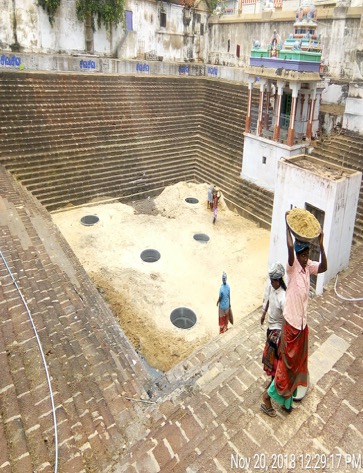
Due to increase in the built-up area, GCC has taken pipes from nearby property rooftops and led it into the Temple tanks. Percolation pits are also laid at the bed of the temple. Many of the tanks restored have led to increase in the water table in the surrounding areas as per the report of Central Ground Water Board.
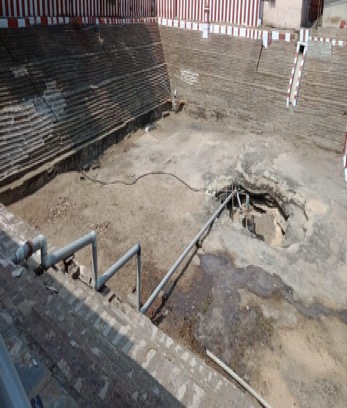
The storm water drain department has already taken up work on building Missing Links in Chennai to allow for better drainage across the City.
Fragmented Governance of Water
“On of the primary issues with Water Management is lack of a single coordinating body” point out experts. To give the readers an understanding into the level of institutional fragmentation we have pointed the various stakeholders of water in Chennai City. The 3 main rivers flowing through Chennai – The Cooum, Kosathalayar and Adyar river are managed by Water Resources Department (WRD) of Public Works Department (PWD). The Storm Water Drain is managed by the Greater Chennai Corporation. The Drinking Water and Sewage system is managed by Chennai Metropolitan Water Supply & Sewerage Board (CMWSSB). Many water bodies are controlled by the Revenue department.
Currently the restoration work done by Storm Water Drain Department comes under the following review committee’s:
- State Level Committee on Water bodies Restoration
- District Level Committee headed by Collector
- NGT Monitored Restoration process
- In Greater Chennai Corporation, the Storm Water Drain Department having Good Team of Engineers headed by Chief Engineer and Monitored by Commissioner.
- Deputy Commissioner/Managing Director of Smart City, Monitors Water Body Restoration taken up with Smart city fund

